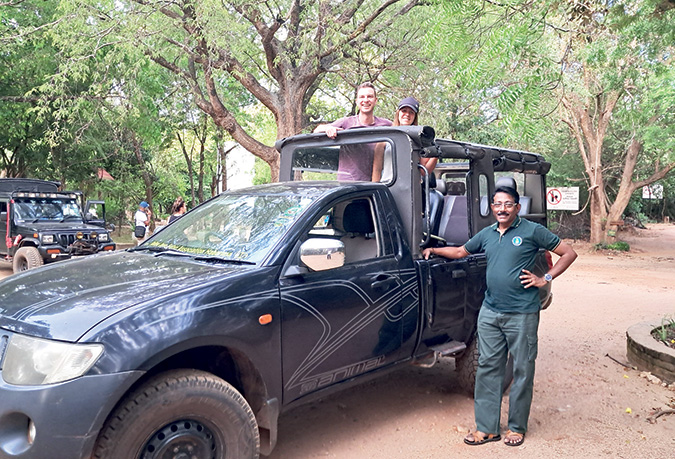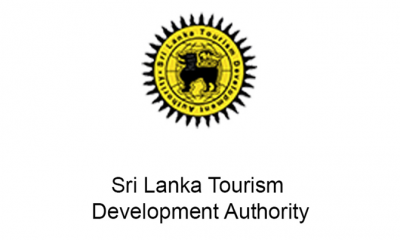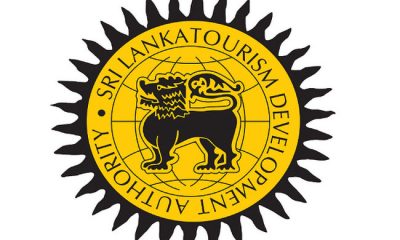Business
Sri Lanka Tourism urged to advance ESG goals with the help of multilateral banks

‘Tourists are keen on reducing their carbon footprint when they travel’, say tourist chauffeur guides
by Sanath Nanayakkare
It is high time Sri Lanka Tourism Development Authority (SLTDA) showcased the seriousness of the government’s commitment to reducing greenhouse gas emissions by deploying electric vehicles (EVs) for tourist transportation, says Ranjith Sudasingha, Vice President of the Chauffeur Tourist Guide Lecturers’ Association.
“One notable way SLTDA can showcase its true commitment to the above cause is by helping our members to get EVs best suited for road trips taken by foreign visitors during their holiday in the country. By actively participating in the Environmental and Social Governance (ESG) goals, SLTDA can demonstrate its leadership in addressing environmental challenges and meeting the expectations of eco-conscious foreign visitors who want to travel in environmentally-friendly vehicles because of the positive impact it has on the environment.”
When asked whether he thought the government had the capacity to allocate foreign exchange for the importation of EVs for tourist transportation, he says,” We understand that the government can’t ask the local banks or the Treasury to provide financing to import EVs for the purpose because of its fiscal consolidation programme and tight foreign reserves management programme. However, if SLTDA is truly interested in boosting tourism revenue and thereby increase foreign inflows to the country, it needs to take the green tourist transportation initiative seriously and find a smart way to mobilize the funds.”
He points out that climate finance provided by Multilateral Development Banks (MDBs) is a key source that SLTDA can tap into. He cites MDBs such as the World Bank, ADB, European Investment Bank (EIB) and the Asian Infrastructure Investment Bank (AIIB) whose global climate finance exceeded $98 billion in 2022 for low-income and middle-income economies.
“These MDBs allocate funds for the purpose every year in line with the UN Climate Change conference (COP21) which Sri Lanka is also a signatory to. Therefore, SLTDA should be able to tap those funds and help us get EVs through soft loans at a concessional duty rate in order to facilitate emission-free tourist transportation.”
“As chauffeur guides we connect with the visiting tourists like no one else does. So we know how keen they are in reducing their carbon footprint when they travel. They come to Sri Lanka because travelling in this country is an exciting and memorable experience for them. But in the midst of all the fun, they are not ready to forget how their holiday may impact the climate.”
“Today’s discerning tourists want to see us treat Mother Nature with the respect she deserves. Nevertheless a large portion of tourist transportation comes from quite old fossil-fuel-powered vehicles and EV charging points are few and far between. This is concerning to the tourists due to its contribution to pollution and global warming. Tourists not only want to stay in green hotels but also want to see green travel integrated into the key elements of sustainable tourism. So the challenge before us is; how can Sri Lanka better meet the needs of informed travellers who demand green transportation and provide them with modern EVs for travel across the country.”
“On the other hand, with fossil fuel prices high in Sri Lanka, EVs can make a better offer for tourists to reduce their travel spending during their stay. It will help attract more and more budget tourists to Sri Lanka. You see, deploying an EV fleet for tourism transportation is not just an obligation towards Climate Change and Global Warming. It would be a smart tourism business strategy because it would appeal to a significant niche in the global tourism marketplace.”
“Currently, our Association members are paid lower than what three-wheelers charge per kilometer. This is a pathetic situation given our running costs. The Destination Management Companies (DMCs) give attractive rental rates to tourists to stay competitive in the business. We have to suffer that loss in silence. We were battered by the pandemic, the economic crisis and the long lean periods of tourism and now we have reached the end of our tether as our requests to this effect have fallen on deaf ears at the SLTDA and the Ministry of Finance.”
“Let me just sum up the whole message”, the veteran chauffeur tourist guide says,” If the authorities can help us get duty-free EVs through soft loans arranged with the MDBs, it will derive four direct benefits. No.1. It will help contribute to Sri Lanka’s emission goals for our planet. No 2. Tourists will identify Sri Lanka Tourism as a truly environmentally-conscious brand and tourist arrivals will grow significantly. No.3. Our Association will be able to sustainably provide cozy rides to tourists while delivering our service at a reasonable profit. No.4. Once such a project is in effect, Sri Lanka Tourism Promotion Bureau (SLTPB) could use a powerful marketing tagline that cuts right to the point in just 7 words; “Sri Lanka Tourism Transportation Turns to Green”.
Business
President and Indian PM jointly launch and inaugurate three development projects

The inauguration and commencement of three development projects implemented in the country with the assistance of the Indian Government took place on Saturday (05)
These projects include the commencement of construction of the Sampur Solar Power Plant, which will add 50 megawatts to the national grid, the inauguration of the Temperature and Humidity Controlled Agro Cold Storage complex in Dambulla and the installation of solar panels on 5,000 religious sites. President Anura Kumara Disanayake and Prime Minister Shri Narendra Modi jointly inaugurated and launched these projects via virtual technology following their official meeting at the Presidential Secretariat on Saturday morning.
Prime Minister Modi’s visit to Sri Lanka reaffirms the concept of “Friendship of Centuries, Commitment to a Prosperous Future,” strengthening the deep-rooted ties between the two nations.
The Sampur Solar Power Plant is part of the Eastern Renewable Energy Zone, which is being established under Sri Lanka’s Long-Term Generation Expansion Plan (LTGEP). It is being developed by Trincomalee Power Company, a joint venture between India’s NTPC Limited and the Ceylon Electricity Board (CEB).
The project is planned in two phases, with the second phase scheduled to commence in 2027. A 500-acre land area has been allocated for this initiative, under the first phase it will contribute 50 megawatts of electricity to the national grid. The project will incorporate state-of-the-art N-type TOPCon solar cell technology, enhancing energy security and promoting a shift from fossil fuel dependency to renewable energy sources. Consequently, the Sampur Solar Power Project is expected to reduce annual carbon dioxide emissions by approximately 200,000 tonnes.
The Dambulla Agricultural Storage Complex (Cold Storage Facility), with a capacity of 5,000 metric tons and equipped with temperature and humidity control, was inaugurated today with the objective of reducing post-harvest losses by approximately 40%, stabilizing fluctuations in agricultural product prices, ensuring the supply of high-quality food to consumers and enhancing agricultural sustainability.
To facilitate research on advanced storage methods for different crops, the facility includes six storage chambers, each designed to simulate various climatic conditions. This is the first facility of its kind in Sri Lanka, built at a total cost of LKR 524 million, with LKR 300 million provided as a grant by the Government of India and LKR 224 million contributed by the Government of Sri Lanka.
The Government of India has invested USD 17 million on the project to install solar panels on 5,000 religious sites and places of worship representing all major religions in all 25 districts. The nitiative, is being implemented jointly by the Ceylon Electricity Board, the Sri Lanka Sustainable Energy Authority and Lanka Electricity Company (Pvt) Ltd.
Under this project, 5,000 solar panel systems with a capacity of 5 kW each will be installed on the rooftops of Buddhist, Hindu, Muslim, Catholic and Christian places of worship. This is expected to add 25 megawatts of solar power capacity to the national electricity grid. The initiative underscores the government’s commitment to a cost-effective, sustainable and reliable energy system.
[PMD]
Business
Will the U.S. 44% Tariff on Sri Lankan Exports Harm Key Industries? Examining the Impact and Sri Lanka’s Path Forward – Ambassador Kananathan

Sri Lanka’s export sector is grappling with a significant challenge following the United States’ decision to impose a 44% reciprocal tariff on Sri Lankan goods. This steep tariff threatens the country’s trade with the U.S., particularly in the apparel industry, which serves as a cornerstone of Sri Lanka’s economy.
Tea and Other Exports Also Under Threat
The repercussions extend beyond apparel, with tea exports at risk due to increased costs that may reduce Sri Lanka’s competitiveness against major producers like India, Kenya, and China. Other key export segments, including spices, seafood, and coconut-based products, are also likely to face price pressures, making it difficult for Sri Lankan exporters to sustain their foothold in the U.S. market.
Given that the United States is a major buyer of Sri Lankan goods, this move raises concerns about trade competitiveness, long-term sustainability, and economic stability. The question now is: how will this tariff impact Sri Lanka’s export-driven industries, particularly apparel, and what strategies can be employed to counteract the effects?
A Major Blow to the Apparel Sector – Sri Lanka’s Leading Foreign Exchange Earner
Ambassador Kana Kananathan, former High Commissioner to Kenya, has warned that this development could severely impact the apparel sector, which accounts for nearly 40% of Sri Lanka’s total exports. With U.S. buyers contributing approximately $3.3 billion annually, the apparel trade constitutes a crucial revenue stream for the nation.
A 44% tariff would substantially raise the cost of Sri Lankan apparel, making it less competitive compared to manufacturers in Bangladesh, Vietnam, Cambodia, and India. This could lead to a significant drop in orders from American buyers, posing a serious threat to the industry’s growth and employment rates.
Navigating the Challenge: Government and Industry Response
While immediate government intervention is necessary to mitigate these effects, businesses must also take proactive measures. Innovation, market diversification, and strengthening supply chain resilience will be essential strategies for overcoming these trade barriers. With the right approach, Sri Lanka can navigate this challenge and position itself more robustly in the global marketplace.
Ambassador Kananathan also suggested that exporters explore the ‘1/3 Cost-Sharing Model’ as a potential solution. Under this approach:
=Sri Lankan Manufacturers accept a partial reduction in profit margins, ensuring their products remain competitively priced.
=U.S. Retailers and Brands agree to absorb a portion of the tariff, recognizing the value of maintaining a reliable Sri Lankan supply chain.
=Raw Material Suppliers provide pricing flexibility, such as offering discounts or extending credit terms, to help offset cost increases.
By adopting these strategic adjustments, Sri Lanka’s export industry can mitigate the immediate impact of the tariff while laying the foundation for long-term trade resilience.
( Ambassador Kananathan was Sri Lanka”s former High Commissioner to Kenya and with concurrent accreditation to 23 African countries as well as Sri Lanka’s Permanent representative to UNEP and UN Habitat)
Business
Three Sinha Industries wins award for excellence at SLIA

Three Sinha Industries Pvt. Ltd. has been recognised with the Award of Excellence at the Sri Lanka Institute of Architects (SLIA) Annual Product Awards, held recently in Colombo. The award was presented for the company’s high-quality, fire-resistant doors, which are made using locally sourced materials and designed to meet the highest safety standards. The award ceremony was held recently in Colombo, and Managing Director Manjula Ariyakumara accepted the award on behalf of the company, marking yet another milestone in Three Sinha’s journey of excellence.
From its establishment as a small-scale business, Three Sinha has grown into a trusted name in Sri Lanka’s construction industry. The company has built a strong reputation for its commitment to quality, innovation, and reliability, earning both local and international recognition. Over the years, it has received several certifications for maintaining top-tier quality standards. Three Sinha has also received many other local and international awards.
Three Sinha Industries offers a diverse range of products and services, including roller doors, shutters, and fire-resistant doors that provide enhanced safety and durability. The company also specialises in aluminum fabrications, sensor doors, and automatic barriers, ensuring a comprehensive suite of solutions for the construction sector. Embracing sustainability, Three Sinha has expanded into green energy solutions, offering three types of solar PV electricity systems: on-grid, off-grid, and hybrid. Additionally, its subsidiary, IKLO Industries, focuses on pre-fabricated and pre-engineered steel buildings, incorporating advanced technology to meet modern construction demands. IKLO has also ventured into the agricultural sector by introducing tractor trailers tailored for farming needs. Moreover, the company manufactures high-quality diesel tanks that meet the standards of both the Ceylon Petroleum Corporation and the Indian Oil Corporation.
-

 Business2 days ago
Business2 days agoDaraz Sri Lanka ushers in the New Year with 4.4 Avurudu Wasi Pro Max – Sri Lanka’s biggest online Avurudu sale
-

 News7 days ago
News7 days agoBid to include genocide allegation against Sri Lanka in Canada’s school curriculum thwarted
-

 Features23 hours ago
Features23 hours agoStarlink in the Global South
-

 Business3 days ago
Business3 days agoStrengthening SDG integration into provincial planning and development process
-

 Business2 days ago
Business2 days agoNew SL Sovereign Bonds win foreign investor confidence
-

 Sports4 days ago
Sports4 days agoTo play or not to play is Richmond’s decision
-

 Features23 hours ago
Features23 hours agoModi’s Sri Lanka Sojourn
-

 Latest News6 days ago
Latest News6 days agoIPL 2025: Rookies Ashwani and Rickelton lead Mumbai Indians to first win























